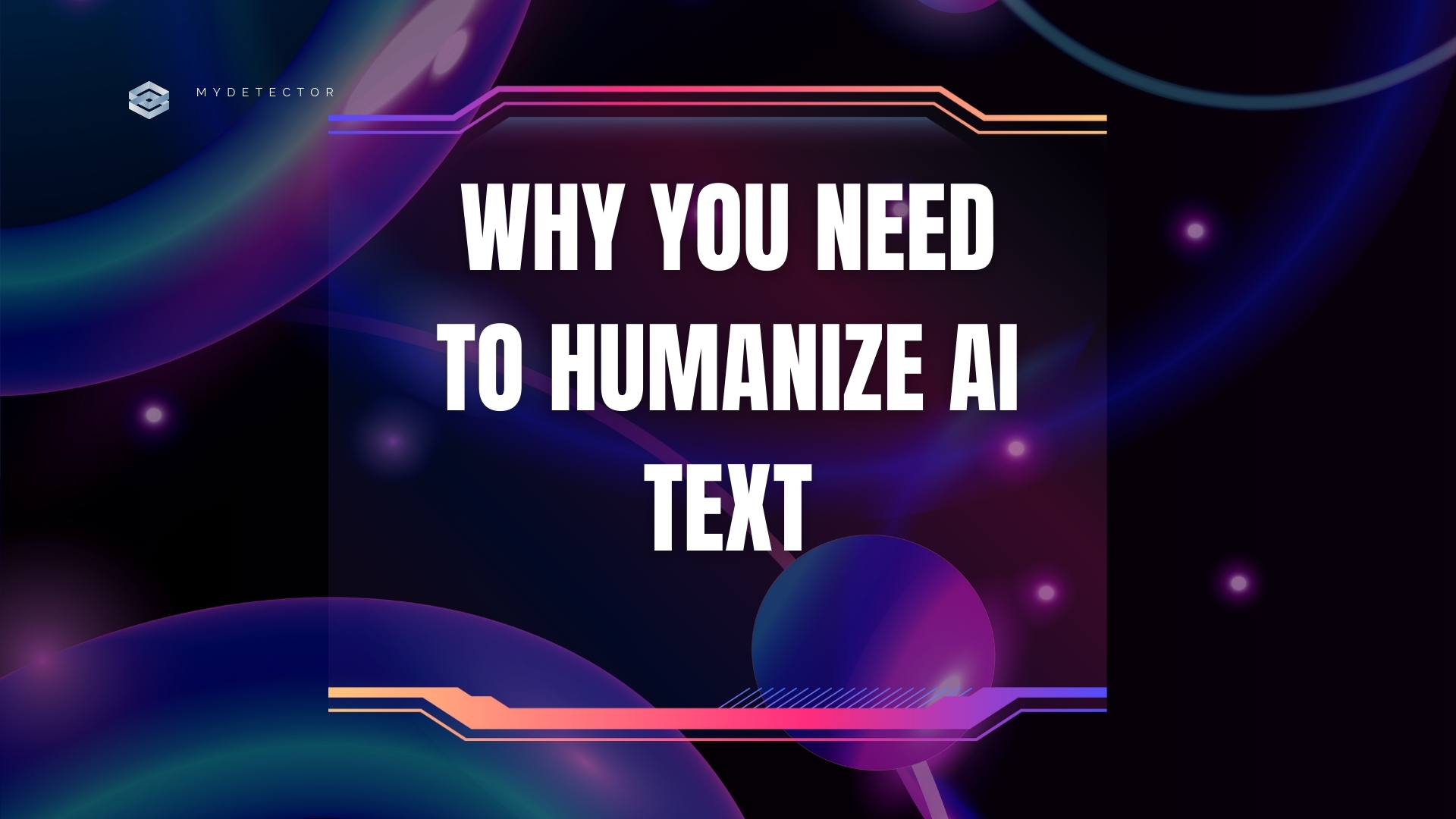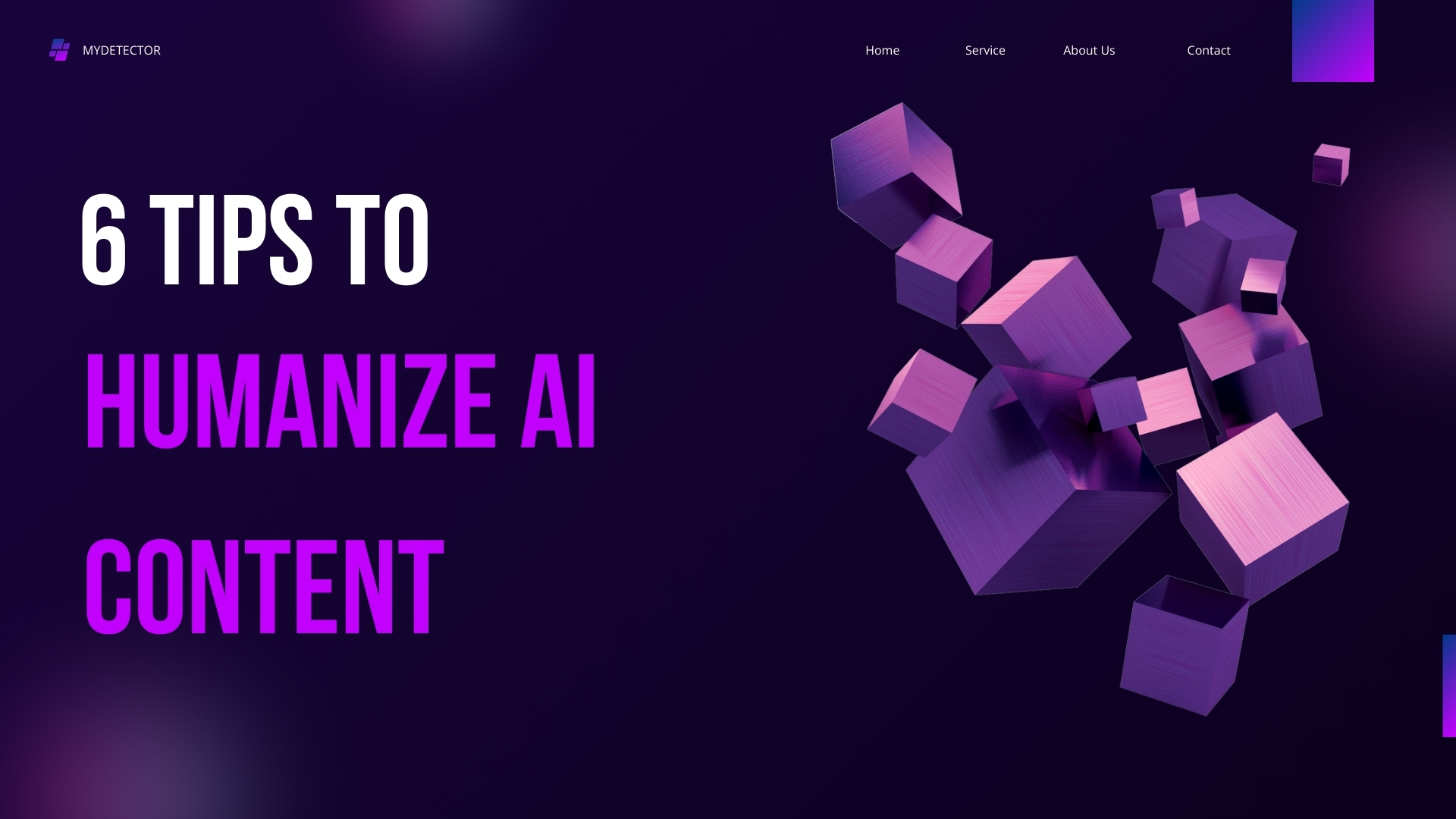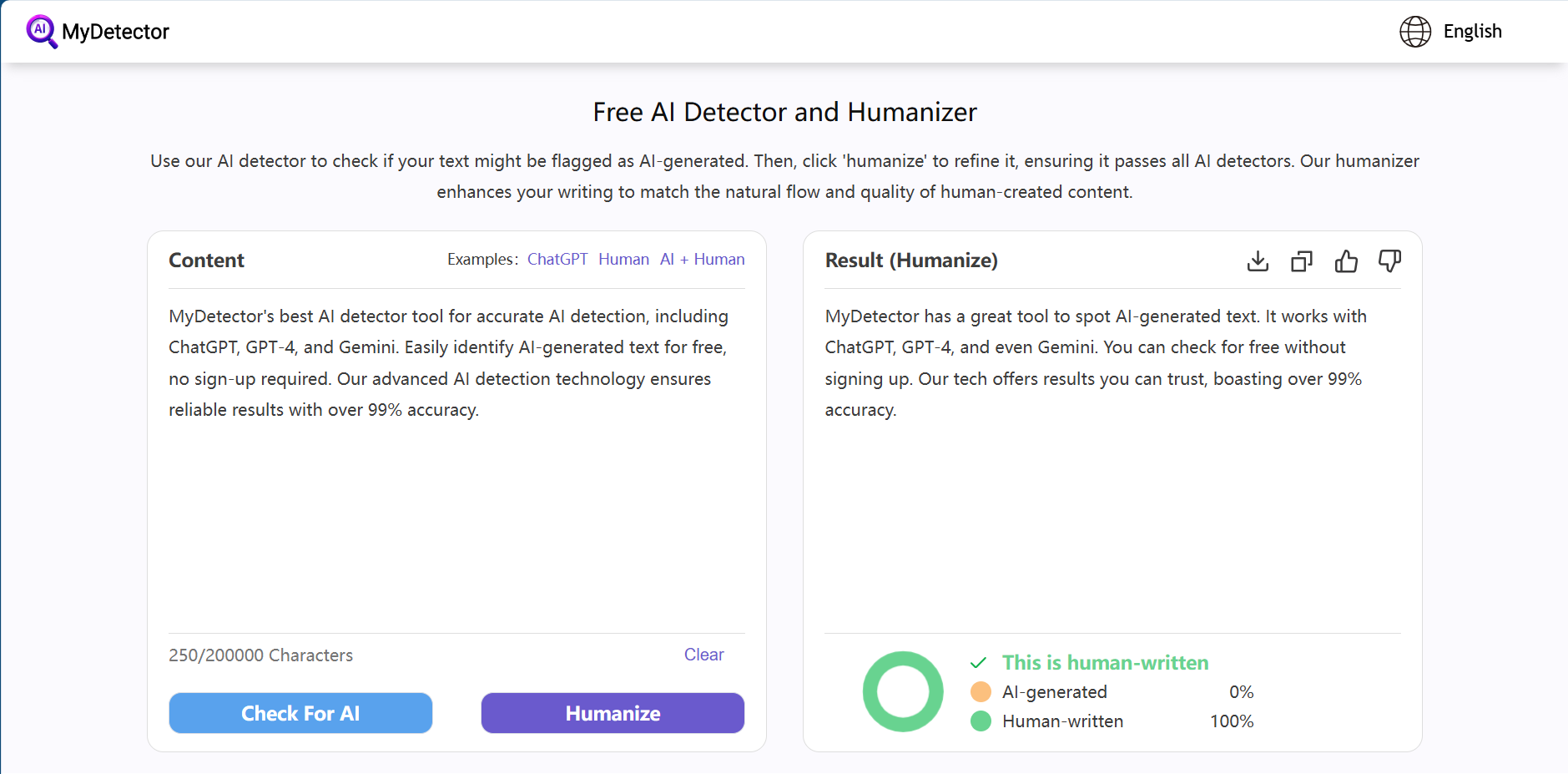How to Humanize AI Content - 6 Expert Tips
AI content is created using artificial intelligence. Basically, machines analyze massive amounts of data to generate text tailored to a specific topic or style. The result can sound a bit strange since AI isn’t human and doesn’t always match our way with words.
But don’t worry, there are ways to humanize AI content and make AI text more human and less robotic. Continue reading, you will find the answer.

Why you need to humanize AI text
There are many reasons why you should focus on humanizing AI content, but here we’ll list the top 5 ones:
1. Better audience engagement
You should always keep in mind that your target audience consists of humans who prefer content that is:
Relatable
Contextually relevant
Nuanced
Capable of resonating with them on a both emotional and intellectual level
And while modern AI models have come a long way, they are still incapable of mimicking the human experience to perfection.
As a result, purely AI-generated content often seems generic and empty of real meaning regardless of the actual value it provides, which can be very off-putting for your audience.
2. Avoiding being flagged as spam
As mentioned above, poor-quality content can get you removed from Google and other search engines.
Content created by AI is usually generic – especially if you don’t know how to make the correct prompts – and can even be inaccurate, as the quality of AI outputs depends entirely on the data you feed into the engine.
If the AI model has access only to outdated, biased, or inaccurate data, it will translate to the content it delivers, as AI is still incapable of advanced reasoning.
As a result, solely relying on AI can easily get you penalized as search engines can easily recognize invaluable or inaccurate content that doesn’t follow their guidelines, making the human touch imperative here.
3. Standing out from the brands
If you’re looking to create a unique brand, you’ll need human writing to help bring your original voice, tone, and brand personality closer to home.
Namely, original brands that manage to connect on a deeper level with their audience have much higher chances of getting more conversions and improved retention rates.
And since AI engines cannot detect emotional nuances or comprehend complex situations, you’ll have to go the extra mile with your content to ensure that it’s relatable and capable of provoking adequate emotional responses from your audience.
4. Improving Research Papers
If you are a student or a researcher, AI content generator can be a great tool for generating research papers. But it’s important to remember that AI is not a human being, and it can’t read your mind.
If you use AI to generate too many academic content, your papers may be judged by the AI detector as unqualified.Such consequences are very serious. At this time, the humanization of text becomes very necessary.
5. Addressing Biases
AI engines are not perfect. They can be biased, and they can also be influenced by the data they are trained on. You may think that AI will be more rational, but the reality is that AI has never been a fair referee.
The AI model usually learns from a large amount of historical data.These data may contain the inherent prejudice of gender, race, age, or other social roles.For example, some groups may appear low in data or presented in a negative manner.
If you want to avoid this, you need to train your AI model to avoid biases, but it's very troublesome. Humanizing the text allows for a more thoughtful and careful review to ensure fairness.

6 tips for humanizing AI content
1. Use emotional language to set the mood instead of bland descriptions
Yes, AI can get a little dry, and most content is not exactly something to write home about. But that doesn’t mean your AI content has to put people to sleep! You want to make an emotional connection with your readers, so spice up those boring descriptions with language that packs a little punch.
Instead of: The AI system analyzes data to find patterns.
Try: The clever AI digs deep into mounds of data to uncover meaningful insights.
See the difference? The second option sparks more interest by implying that AI is "clever" and will uncover "meaningful" patterns. Emotional language, even in small doses, helps bring AI content to life and gives readers a reason to care.
Sprinkle these throughout the content yourself to give it that extra emotional boost that AI has trouble with.
2. Be specific with your prompts and desired voice
Creativity and humor on demand are hard! As the human giving prompts to your AI writer, be as specific as possible about the voice and tone you want. Saying “write something funny” is too vague.
Giving the AI constraints and a clear model to work from will make it much easier to deliver what you’re looking for. After all, humor is subjective and varies from person to person. The more clues you can give about the type of funny you want, the better.
And remember, just like people, AI systems have their limitations. Mimic? Yes. Truly creative humor? Not quite.
3. Train the AI to match your style
You know that awkward moment when you're talking to someone, and they just don't quite “get” you?
That's what reading AI content can feel like. The AI is trying its best, but it just wasn't programmed with your particular brand of hilarious wit, quirky way of looking at things, or even company-specific style in mind.
Here are some ideas to help nip that in the bud:
Pump up the personality a bit. Feed the AI samples of your own writing so it can analyze your style. Do you use lots of pop culture references? Sarcasm? Puns? The more content you provide, the more AI will start to reflect your style.
Go over everything carefully. Even after you've trained the AI on your style, you still need to double-check that it's getting the details right. Make sure it's not propagating any incorrect information or making inappropriate assumptions. The AI isn't all-knowing, so you need to verify the facts and do some old-fashioned human editing. With a little elbow grease, you’ll help it get where you want it to be.
4. Use AI as a research assistant, not a writer
AI is great at gathering and organizing information, but not always so hot at crafting eloquent prose. AI can be the research assistant who provides the raw materials but needs you, the creative writer, to shape it into something special.
AI can search the internet and deliver reams of data on any topic in seconds.
So, have it dig up studies, statistics, examples, and anecdotes to support the key points you want to make.
Then, use its findings as inspiration to get it going with a first draft.
You can then fill out or edit that draft to your heart’s content. Your voice and style will connect with readers much more than just AI-generated content.
5. Fact-check and edit thoroughly
So you’ve written your AI-generated content, and now it’s time to give it a good once-over.
No matter how sophisticated the tech gets, it’s going to make mistakes. It’s your job to catch them!
Read through your content carefully and keep an eye out for anything that sounds “off.” Double-check any facts or statistics — AI has a tendency to “hallucinate” and make up numbers or even create companies out of thin air.
For example, you might come across a sentence like: “Did you know over 73% of people prefer AI-written blog posts?” Unless there’s a legitimate study to back that up, delete it!
AI also struggles with semantics, metaphors, and nuance, so simplify or rephrase anything confusing.
Once you’ve combed through for inaccuracies, work on tightening up the language and flow. AI can ramble, repeat itself, and lose focus.
Try dividing long paragraphs into shorter ones, rearranging sentences and sections for better flow and coherence, and deleting any unnecessary or redundant bits.
6. Add personal experiences and anecdotes
AI bots can imitate a lot, but they can’t imitate life experiences they’ve never had.
So, adding in little stories and anecdotes from your own life is a great way to make AI content sound more human.
For example, say you’re writing about writing:
“Speaking from experience, I know how frustrating it can be to get writer’s block and stare at a blank screen. One time, I was trying to draft an important email at work, and I just couldn’t find the right words. After taking a quick walk around the block, the words came to me like the lyrics to my favorite song!”
Sharing personal experiences, even if in a lighthearted way, helps the reader connect with you and makes the content more relatable. Your stories don’t have to be deeply profound or wildly entertaining — even small, mundane anecdotes can work. The important thing is that they come across as genuine.

Use Humanize AI to humanize AI text
So, even after you’ve gone over every word, how do you know if your AI content sounds human?
AI detectors can help you put on your skeptical pants and look at the content algorithmically.
They analyze any piece of writing and flag parts that sound too “bot-like.” They’ll catch overused words, complex sentences, and a lack of pronouns that make AI content stick out.
Run your content through a few AI checkers like Mydetector. It’ll give you an “AI score” so you know how human-like your writing is.
Next is the ultimate trick I want to introduce, which is to use Humanize AI to humanize AI text.
Humanize AI is an efficient tool that humanizes AI text and makes it sound more human. It’s a simple way to add a touch of personality and character to your AI content.
I believe Mydetector Humanize AI is your best choice, you can visit our website for more information. Besides, if you want to know the exact steps to use our combination of AI Detector and Humanize AI, try to read this blog: How to Use AI Detector and Humanize AI to Make AI Content Sound More Human.

Summary
After reading this article, you should now know why you need to humanize AI text. So what are you waiting for? Using the tips and tricks I’ve shared here, you can humanize AI text and make it sound more human. Don't forget to make good use of our MyDetector tool, and you will gain the ability to create better content.